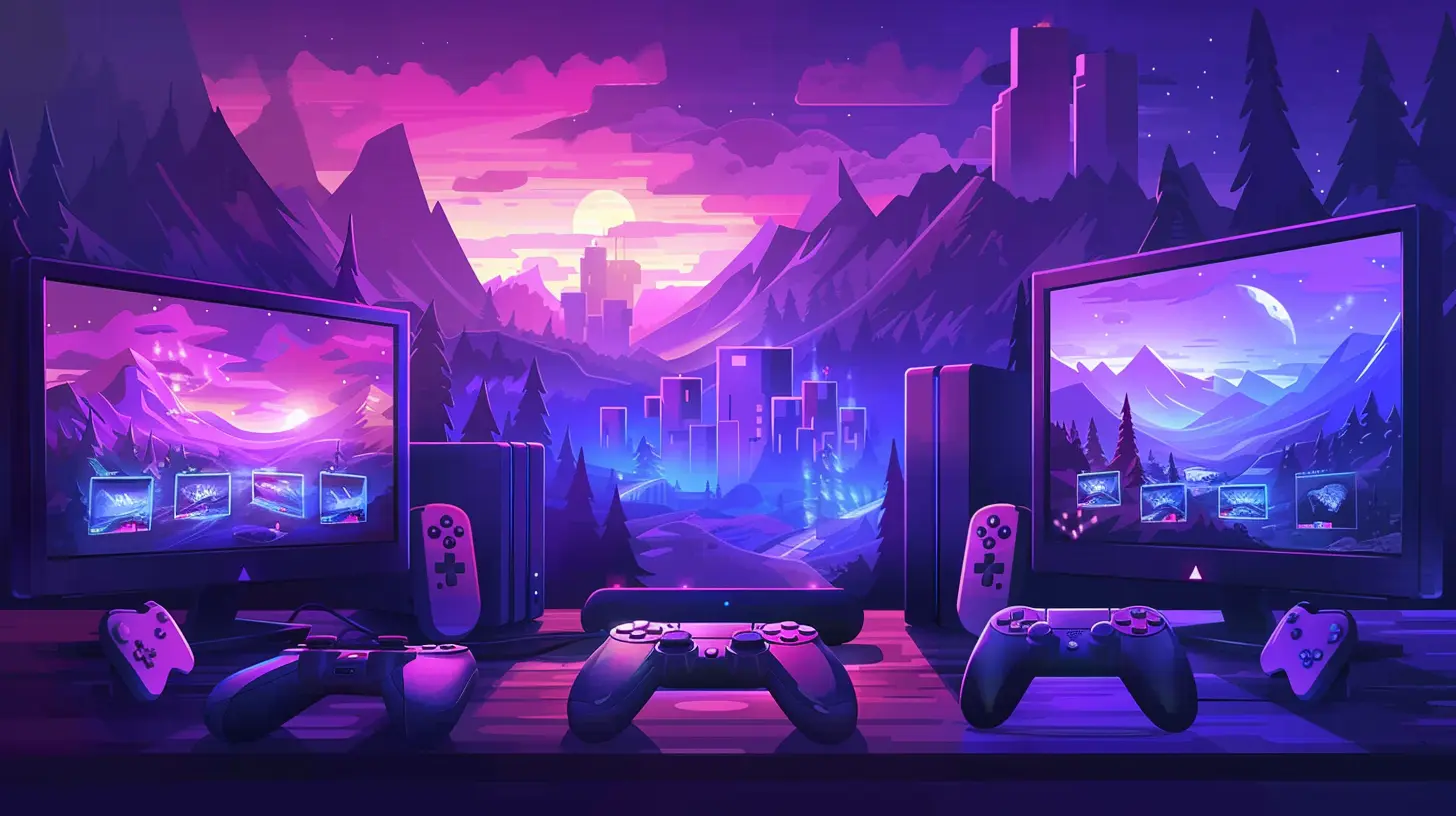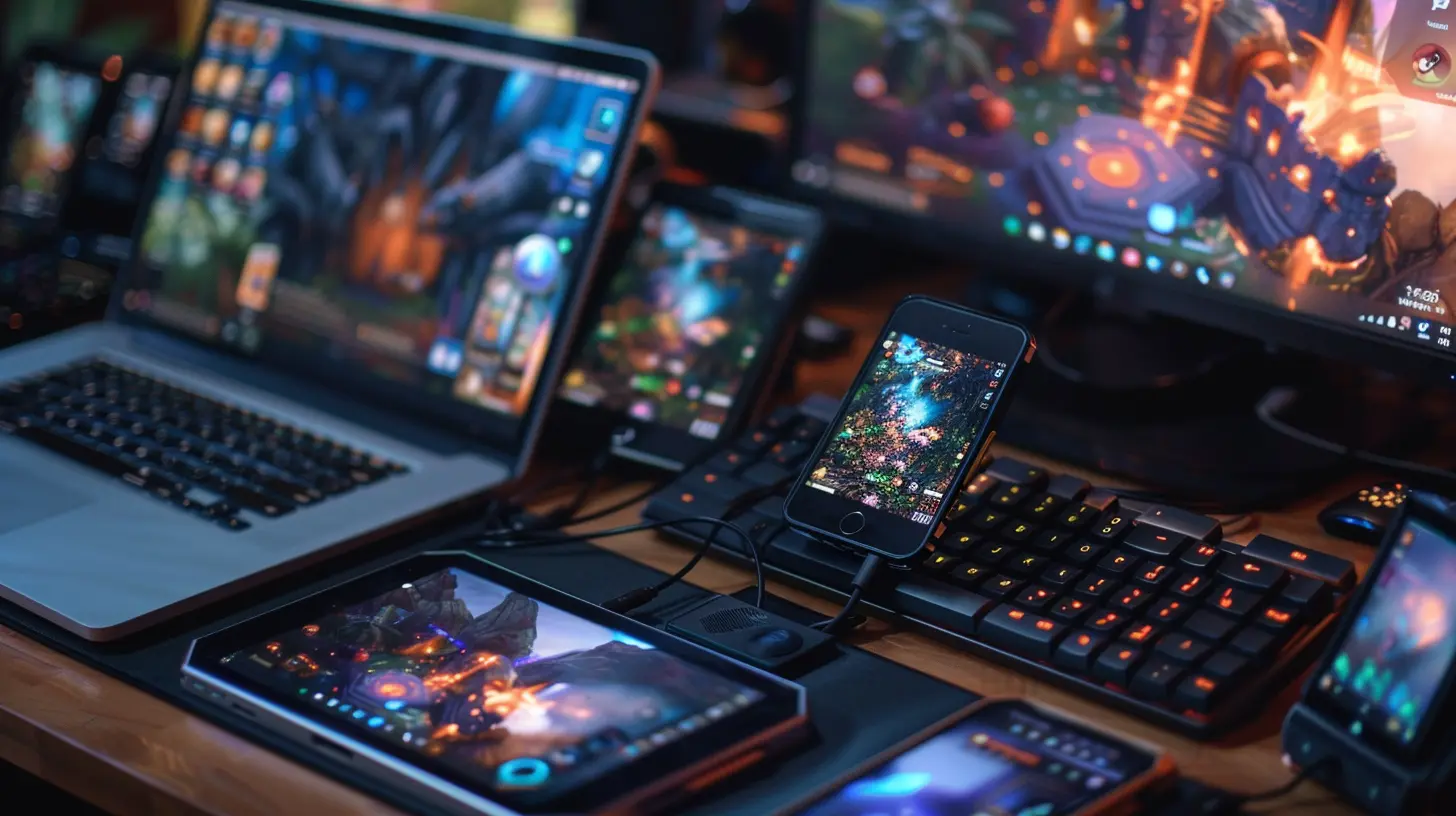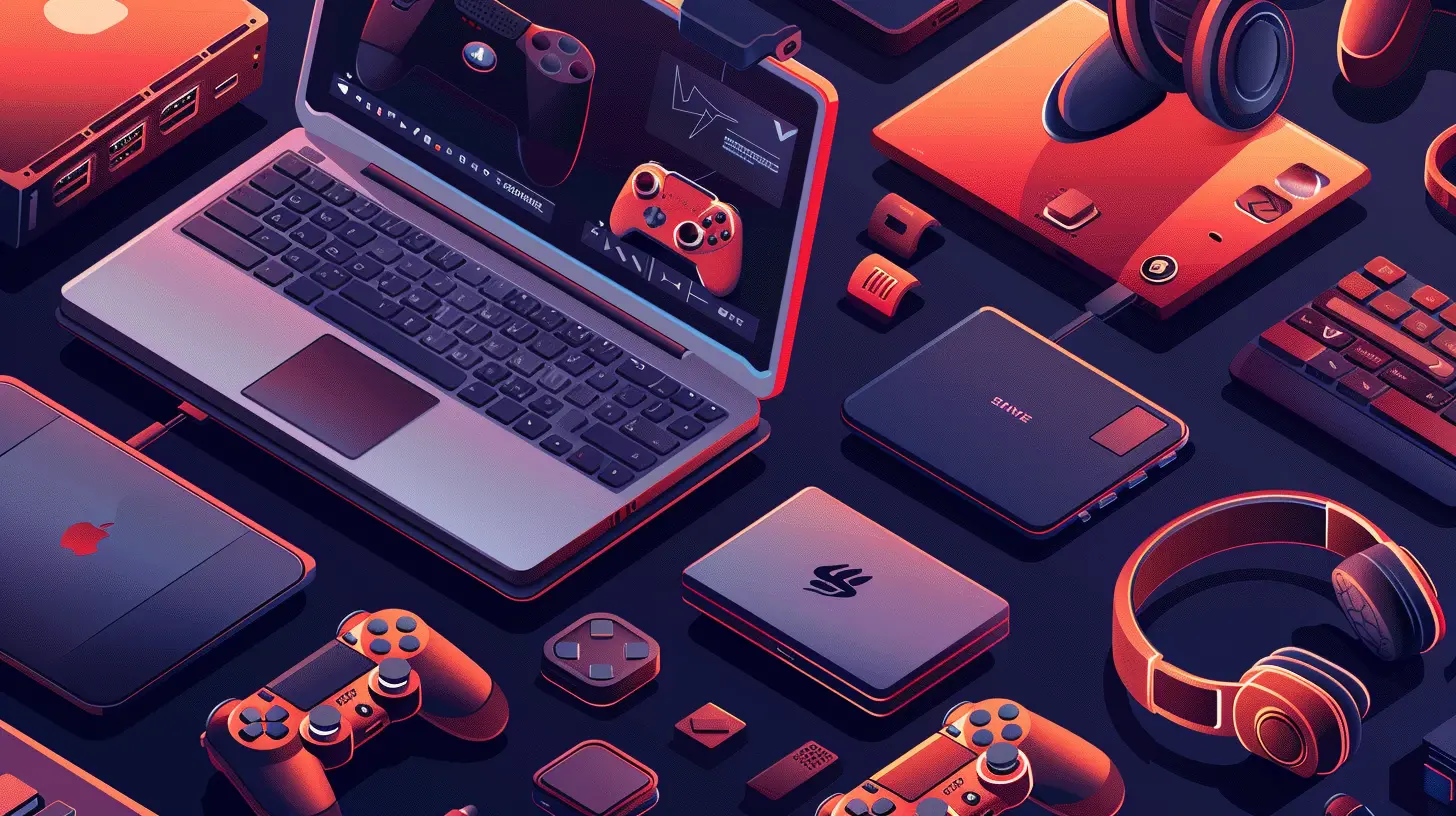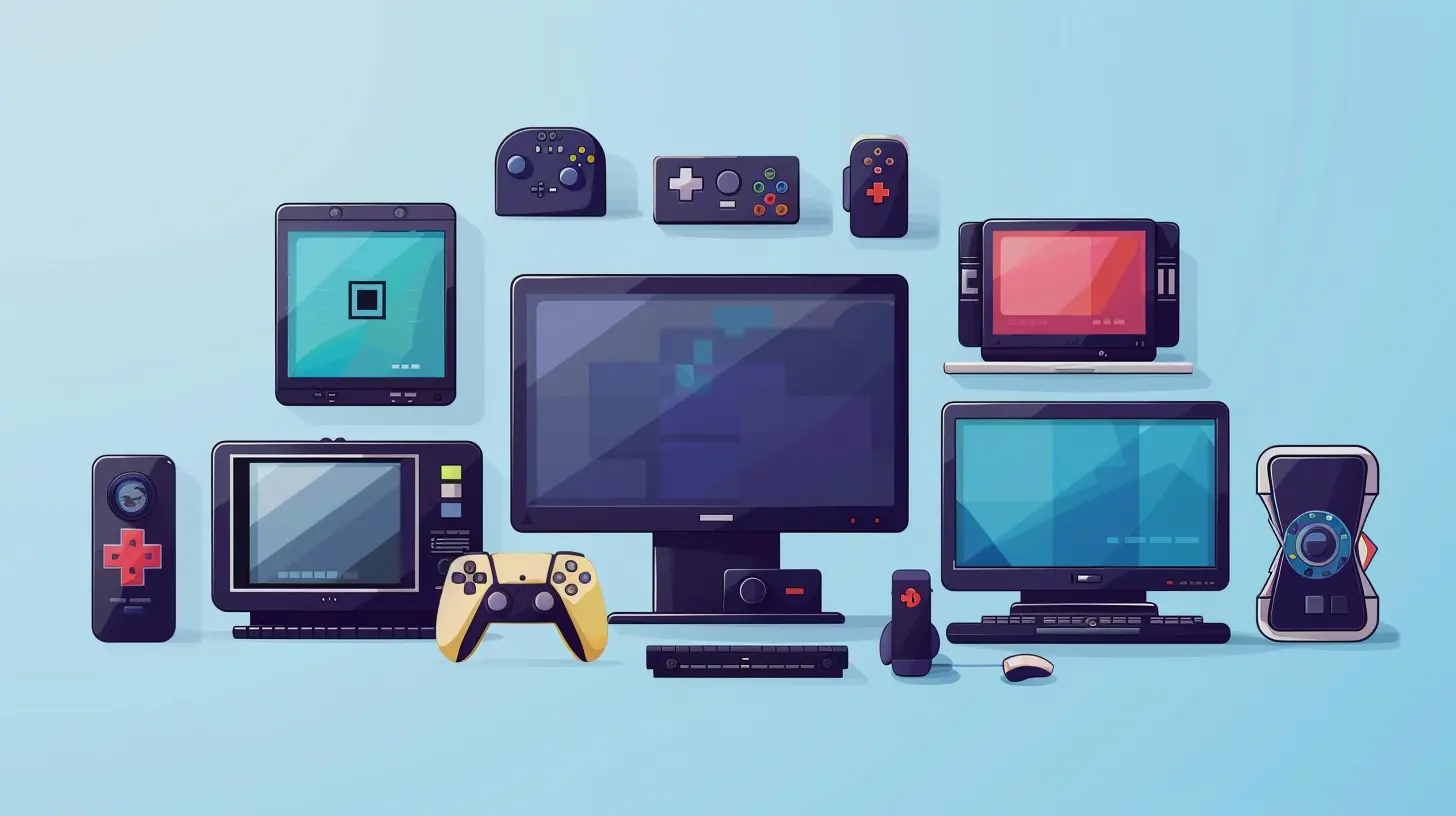Cross-Platform Development: How to Release a Game on Multiple Devices
28 June 2025
Making a video game is exciting. But you know what's even better? Releasing your game on multiple platforms—PC, consoles, mobile, you name it. That’s what we call cross-platform development, and if you’re serious about growing your game’s reach, it’s something you’ll want to get comfortable with.
In this guide, we're going to walk through what cross-platform development really means, what challenges you might face, and how to make sure your game is ready for action—no matter where your players are.
Whether you're a solo dev with a big dream or a studio team looking to expand your audience, this one’s for you.
What Is Cross-Platform Development Anyway?
Okay, let’s break it down. Cross-platform development means building your game so it can run on more than one platform—like PC, Xbox, PlayStation, Nintendo Switch, Android, and iOS.Think of it like making a movie that looks amazing whether someone watches on a giant 4K TV or their old laptop. You’re tailoring one experience for lots of different screens, controllers, processors, and user expectations.
Sounds easy? Not quite. But it’s totally doable with the right strategy.
Why Go Cross-Platform?
Still on the fence about taking the multi-device route? Here’s why it’s absolutely worth considering.1. Reach More Players
This one’s obvious. More platforms = more players. And more players? That means more sales, more reviews, more community — everything you want to grow your game’s visibility and impact.2. Increase Game Longevity
If you launch your game on one platform, the buzz might die down fast. But if you stagger your releases or launch across multiple devices at once, you can keep that momentum rolling (and the hype alive).3. Build a Larger Community
Cross-platform play can unite all your players in one big happy family. They could be on a phone, you’re on a PC, and your friend’s on a console — but you’re all battling it out together like it’s no big deal.
Challenges You’ll Face (And How to Handle Them)
Let’s not sugarcoat it. Going multi-platform isn’t a walk in the park. But hey, no great adventure ever is. Here are the curveballs to watch out for—and how to dodge 'em.1. Platform Limitations
Every platform has its own specs, quirks, and certification requirements. What's smooth on a PS5 might lag like molasses on a low-end Android phone.How to handle it: Choose your platforms wisely. Don’t try to be everywhere unless your game can handle it. Start with your core audience and expand from there.
2. Control Schemes
Touchscreen versus keyboard versus controller. They all create different gameplay experiences.What you can do: Design flexible controls from day one. Your UI has to feel native no matter how players interact with the game.
3. Performance Optimization
Different devices = different frame rates, screen sizes, memory limits, and processor speeds.Your move: Use performance profiling tools. Optimize textures, LOD (Level of Detail), and minimize background computation. Don't overdo the particle effects if they’re going to tank frame rates on mobile.
4. Platform-Specific Features
Some platforms have achievements, cloud saves, subscriptions, or input APIs that don’t exist elsewhere.Best approach: Use abstraction layers in your code. Modularize features so you can swap in platform-specific functionality. It’s extra work upfront but saves you headaches later.
Choosing the Right Game Engine for Cross-Platform Development
Spoiler alert: Your game engine makes a HUGE difference. Lucky for us, some of the industry’s top engines are built with cross-platform in mind.1. Unity
Probably the most popular choice for indie and mid-sized devs. Unity supports building to over 25 platforms. It's especially good for 2D and 3D games, and its community is massive, which makes troubleshooting a lot easier.2. Unreal Engine
If you’re going for ultra-realistic graphics and want to target consoles and PC, Unreal’s your go-to. Unreal also supports cross-platform development and has powerful tools for handling platform differences.3. Godot
An open-source engine gaining rapid popularity. Godot is flexible and lightweight, and it supports multiple platforms. But be aware: it may require more custom work compared to Unity or Unreal.4. GameMaker Studio
Great for 2D games. If you’re building a pixel-art RPG or platformer, GameMaker simplifies a lot of the cross-platform headaches.Creating a Unified Game Experience Across Platforms
Here’s what separates the pros from the rookies: creating a consistent experience no matter what device someone’s playing on.Design With Platform Agnosticism in Mind
From the start, you want to think in universal terms. Don’t hard-code PC controls or design tiny UI buttons that only work with a mouse. Instead, imagine someone playing on the couch using a controller, on their phone in line at Starbucks, or on a laptop on a train.Think big. Code smart.
UI and UX: One Size Doesn’t Fit All
Make your UI scalable. Use relative sizes instead of absolute pixels. Create input methods that adapt to controller, keyboard, and touchscreen.A good rule of thumb? If you can play your game blindfolded on one platform and still feel like it “makes sense” on another, you're doing it right.
Save Systems and Sync
Want players to switch from mobile to PC without losing progress? Cloud syncing is essential.Use services like:
- Steam Cloud
- PlayFab
- Firebase
- iCloud (for iOS)
- Google Play Games Services
Syncing makes your game feel cohesive and modern — a small detail that players absolutely notice and love.
Should You Go With Cross-Platform Multiplayer?
It’s one of the hottest features in gaming right now. Think Fortnite, Rocket League, or Genshin Impact—players don’t care what device they’re on, they just want to play with friends.You CAN make this happen, and here’s how:
Choose a Networking Backend That Supports It
Some solid options include:- Photon
- Mirror for Unity
- Epic Online Services
- PlayFab Multiplayer
Matchmaking and Fairness
One catch: Crossplay must be fair.Mouse and keyboard players might dominate mobile users. So maybe you match by input device instead of platform? That way, everyone’s got a level playing field.
App Stores, Consoles, and Certification: What to Know
Getting your game built is one thing. Getting it approved is another beast entirely.PC Game Distribution
- Steam: The biggest. You’ll need to integrate Steamworks SDK.- Epic Games Store: More curated, but great revenue share.
- Itch.io: Indie-friendly and very open.
Console Certification
This one's tricky. You’ll need dev kits and partnerships.- PlayStation: Go through Sony’s certification with TRC (Technical Requirements Checklist).
- Nintendo Switch: Requires a licensed developer status with Nintendo.
- Xbox: Use ID@Xbox to access development resources.
These platforms demand very specific behavior around crashes, saves, memory usage, and UI consistency. Miss a detail, and your submission could get rejected. So test, test, and test again.
Mobile Stores
- Google Play & Apple App Store: Each has its guidelines. Apple is particularly picky about performance and UI.- Tip: Make sure your game doesn’t have long load times or weird permissions, or it may get flagged.
Build Automation: Your Secret Weapon
Manually building and testing for each platform? That’s a burnout recipe. Automation can save your soul.Use CI/CD Tools
Use tools like Jenkins, Unity Cloud Build, or GitHub Actions to automate the build process across platforms. Push code, test it, and grab builds automatically.It’s like having a robot intern who never complains.
Monetization and In-App Purchases Across Platforms
Each platform handles purchases differently:- Google and Apple: Native in-app billing
- PC and Consoles: DLCs, expansions via platform stores
- Cross-platform currency: You must follow rules to keep purchases in sync
Make sure you comply with storefront policies. You don’t want to get pulled down because you offered an outside payment option (looking at you, Fortnite vs. Apple).
Testing: Don’t Skip This Step
Cross-platform bugs are like gremlins — they appear out of nowhere and mess everything up.Test on as many real devices as you can. Emulators help, but nothing replaces real-world testing. Watch for:
- UI stretch or breakage
- Controller input issues
- Screen resolution glitches
- Save/load corruption across platforms
And don’t just test at launch. Keep testing with every update.
Final Thoughts: Is It Worth It?
Yes. It’s extra work, but the payoff is real. Going cross-platform turns your game from a local coffee shop into a worldwide café.You get more reach, more love, and more opportunities to grow as a developer. And that’s the dream, right?
Just plan smart, stay flexible, and build with cross-platform in mind from day one. You’ve got this.
all images in this post were generated using AI tools
Category:
Game DevelopmentAuthor:

Avril McDowney
Discussion
rate this article
2 comments
Zephyrwind Fields
Unleash creativity: conquer all platforms effortlessly!
October 8, 2025 at 2:26 PM

Avril McDowney
Absolutely! Cross-platform development empowers developers to reach wider audiences while maximizing creativity across all devices.
Troy Parker
Balancing performance and design is crucial!
July 11, 2025 at 4:01 AM

Avril McDowney
Absolutely! Striking the right balance ensures a great user experience across all devices while maximizing performance.

